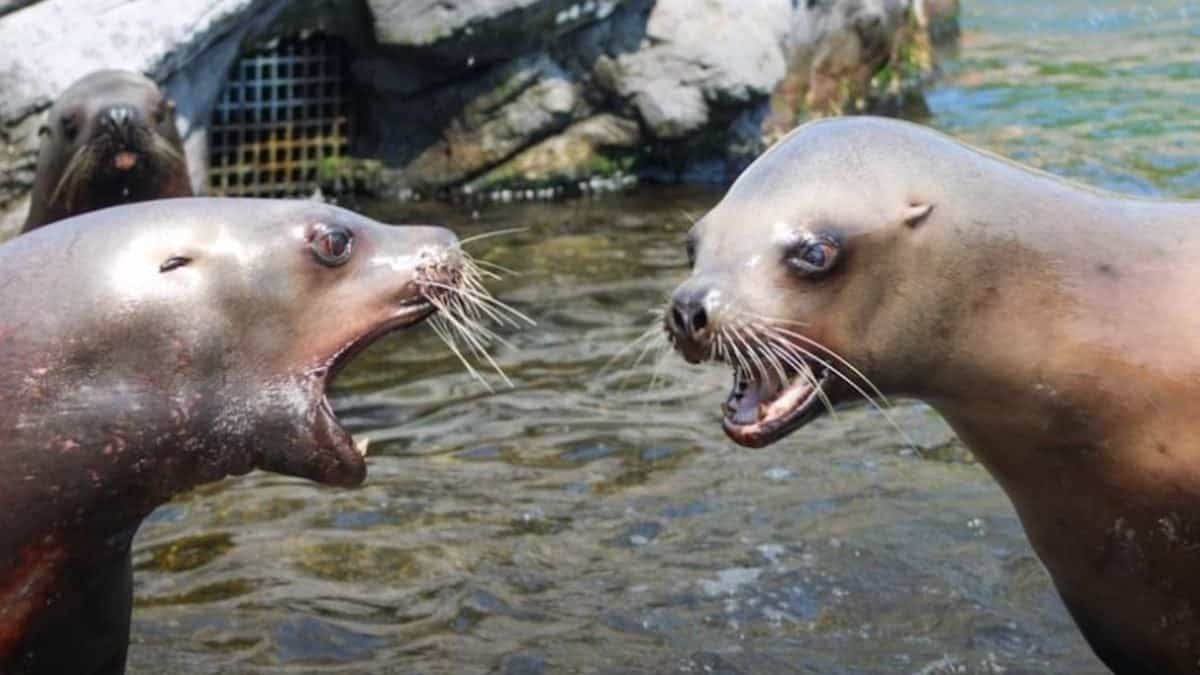Show table of content Hide table of content
The peaceful atmosphere at Pairi Daiza Zoo in Belgium was disrupted recently when a dramatic confrontation between two Steller sea lions forced a temporary closure of part of the facility. This unexpected incident, which occurred on June 8, 2025, highlights the complex behaviors of these magnificent marine mammals during their breeding season.
Rejected advances lead to aggressive behavior at Belgian zoo
On a seemingly ordinary Sunday at Pairi Daiza Zoo, visitors witnessed nature’s raw dynamics when a male Steller sea lion became aggressive after his mating advances were rejected. The incident took place in the “Last Frontier” section of the zoo, an area dedicated to species native to British Columbia and southern Alaska.
According to Hubert Vanslembrouck, a zoo representative, the confrontation was triggered during mating season when a female sea lion refused to mate with the male. “A male Steller sea lion wanted to mate with a female during breeding season, but she refused,” explained the spokesperson to local media outlet Nieuwsblad. The situation quickly escalated as the rebuffed male showed signs of aggression toward the female, eventually attacking her.
Animal behavior experts note that such reactions, while concerning in captivity, mirror natural behaviors observed in wild populations. When similar incidents occur in natural settings, animals typically have more space to retreat, unlike in zoological environments where animals can sometimes breach containment areas, requiring immediate management responses.
Zoo management promptly evacuated visitors from the area as a safety precaution. “We decided to close the zone. We waited until the male was transferred to another pool,” stated the zoo administration. After several hours and once the situation was under control, the affected section was reopened to the public.
Understanding sea lion mating behaviors and rejection
The incident at Pairi Daiza offers a glimpse into the complex mating rituals of Steller sea lions. Female sea lions typically become receptive to mating only during specific hormonal cycles. As Vanslembrouck explained, “She was clearly not in a hormonal climate conducive to accepting mating.”
Steller sea lions, also known as northern sea lions, exhibit distinctive breeding behaviors characterized by male competition and female choice. During breeding season, males establish territories and attempt to attract females for mating. However, females exercise considerable selectivity, often refusing advances from certain males based on various factors including timing of their reproductive cycle.
Animals A hammerhead shark crashes down from the sky in South Carolina, halting a disc golf game.
Wildlife conservation specialists compare this behavior to other marine mammals that have made headlines, such as when previously thought extinct species reappear in unexpected locations, demonstrating how much we still have to learn about marine mammal behavior and ecology.
The hormonal cycles of female sea lions are precisely timed to ensure optimal conditions for pregnancy and successful rearing of pups. When females reject mating attempts outside these optimal windows, males may respond with displays of aggression, as witnessed at Pairi Daiza. This natural behavior poses management challenges for zoological facilities tasked with maintaining both animal welfare and visitor safety.
Magnificent giants of the northern Pacific
Steller sea lions rank as the largest sea lion species in the world, making incidents involving these animals particularly concerning for zoo management. Adult males can reach impressive dimensions of up to three meters in length and weigh as much as one ton. Females, while still substantial, are notably smaller and lighter than their male counterparts.
These magnificent marine mammals are distinguished by their massive size and thick fur, adaptations that help them thrive in the cold waters of their native habitat along the rocky coastlines of the North Pacific. Their powerful physique enables them to navigate challenging ocean conditions and pursue prey with remarkable agility.
Animals A wild elephant enters a convenience store and raids the food aisle.
Conservation efforts for these animals have intensified in recent years as their populations face various threats. Much like stories of communities rallying around vulnerable individuals, marine conservation organizations have mobilized significant resources to protect these charismatic mammals.
In captivity, Steller sea lions require specialized care and environmental enrichment to maintain their physical and psychological well-being. Zoos like Pairi Daiza implement comprehensive management protocols designed to accommodate the natural behaviors of these animals while ensuring safety for both the sea lions and visitors.
Managing wildlife in captivity presents unique challenges
The incident at Pairi Daiza underscores the complex challenges faced by modern zoological facilities in managing wildlife, particularly during sensitive periods such as breeding seasons. While zoos strive to create naturalistic environments, the constraints of captivity can sometimes exacerbate natural behaviors.
Animal care professionals must remain vigilant and responsive to behavioral changes that might indicate potential conflicts. Quick reactions are essential, similar to situations where rapid intervention prevents tragic outcomes in emergency situations.
For Pairi Daiza, the prompt decision to evacuate visitors and separate the aggressive male demonstrated their commitment to both animal welfare and public safety. The temporary closure allowed staff to manage the situation effectively without further escalation.
As visitors return to the reopened exhibit, many gain a deeper appreciation for these powerful animals and the natural behaviors they exhibit. Educational opportunities arise from such incidents, helping the public understand the importance of respecting wildlife and the dedication required for proper animal care and conservation.
Zoological gardens worldwide continuously refine their management practices based on experiences like this one, developing improved protocols for addressing natural behaviors while maintaining the highest standards of animal welfare and visitor experience.
Source : https://pubs.acs.org/doi/10.1021/acsami.4c02319
Animals The world’s first genetically modified spider is capable of producing fluorescent red silk.


